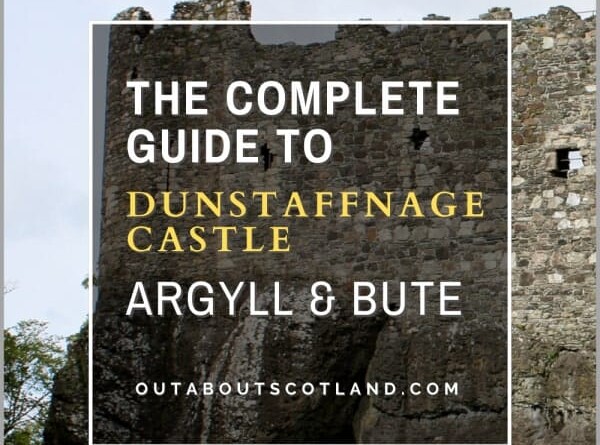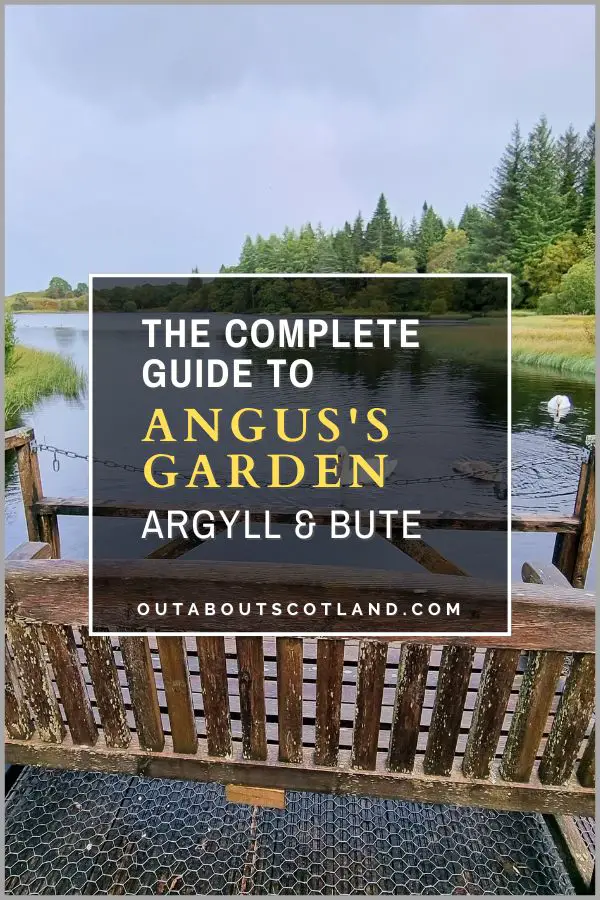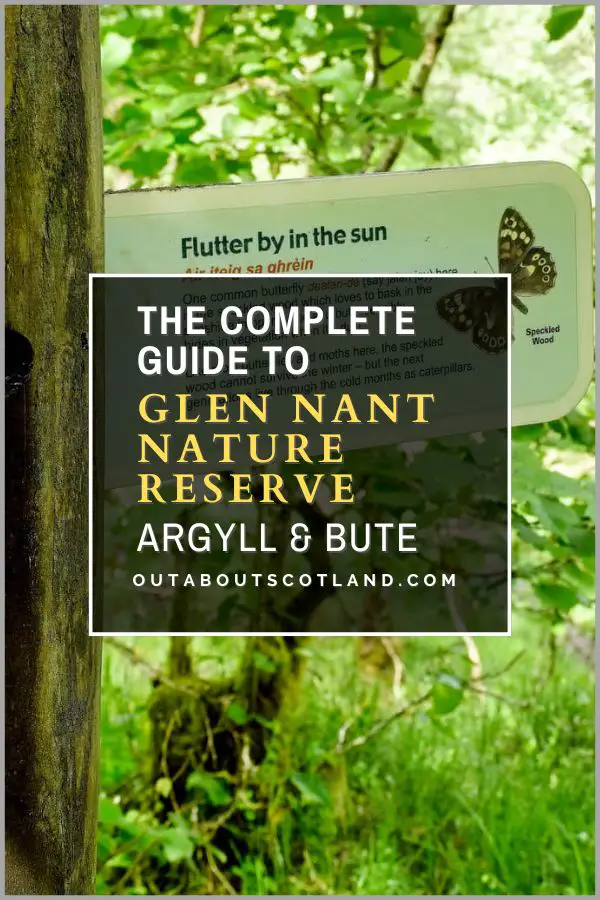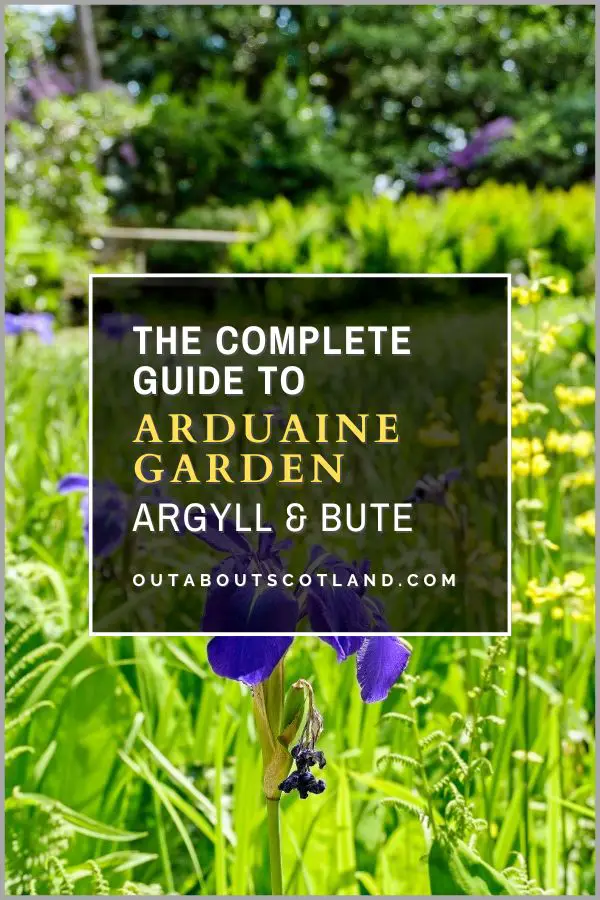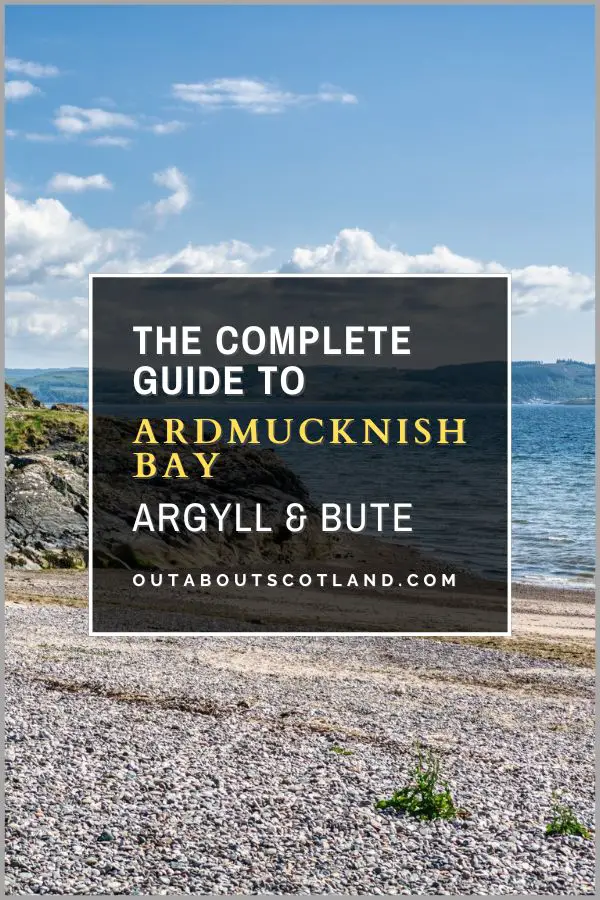Set against the backdrop of dramatic landscapes and the shimmering waters of Ardmucknish Bay in Argyll, Dunstaffnage Castle presents a captivating tale of power, intrigue, and resilience. In this article, we’ll embark on a journey to explore the secrets of Dunstaffnage Castle from its strategic location to its fascinating history, uncovering the stories that have shaped the region and left an indelible mark on Scotland.
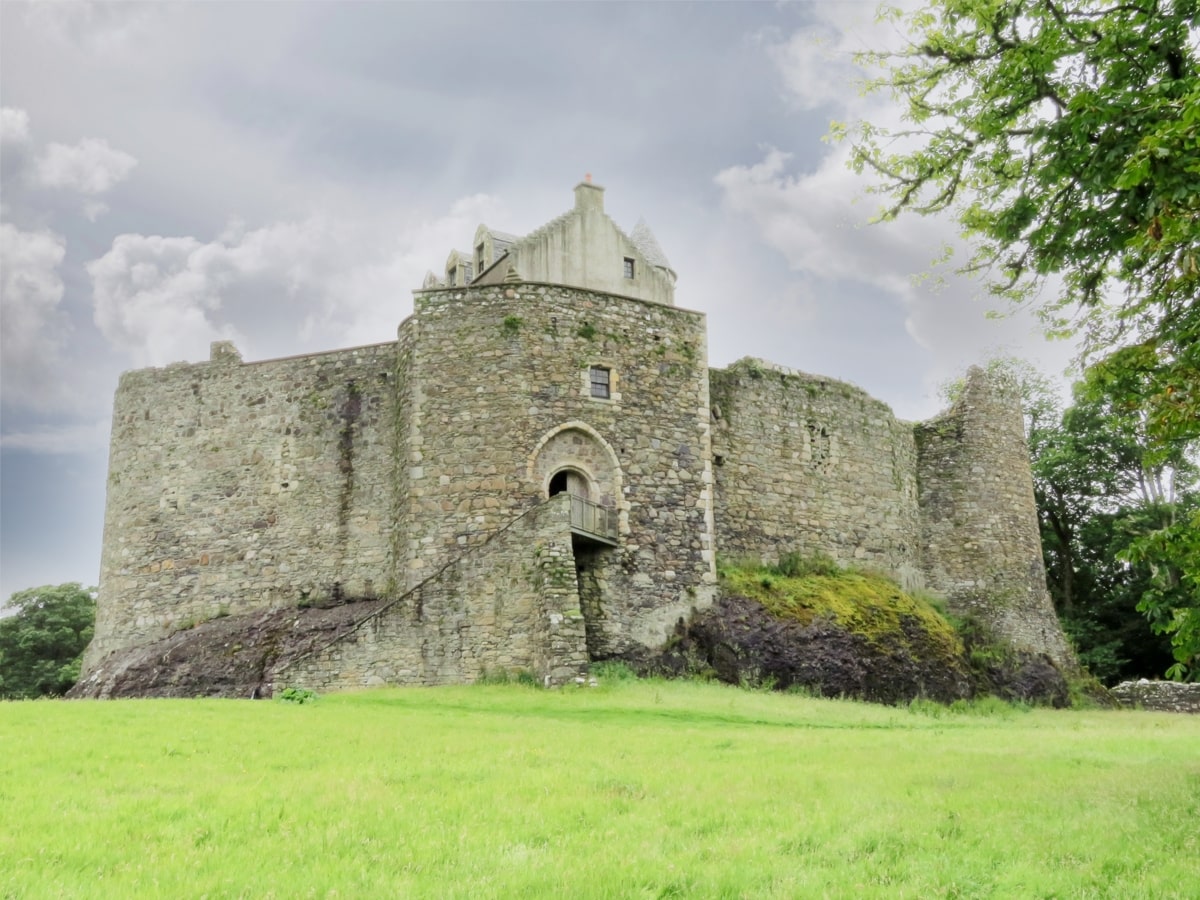
| Address: | Dunbeg, Oban, PA37 1PZ |
| Opening Hours: | 1 April to 30 September: Daily, 9.30 am to 5.30 pm Last entry 5 pm 1 October to 31 March: Daily, 10 am to 4 pm, except for Thursday and Friday Last entry 3.30 pm |
| Admission Price: | Adult (16-64yrs) £7.00 Concession (65yrs+ and unemployed) £5.50 Child (5-15yrs) £4.00 Family (1 adult, 2 children) £14.00 Family (2 adults, 2 children) £20.00 Family (2 adults, 3 children) £24.00 |
| Parking: | Free car park on-site |
| Contact: | 01631 562 465 |
| Facilities: | Shop, toilets, drinks machine, visitor centre |
| Photos: | Virtual Tour YouTube Video |
Overview
Dunstaffnage Castle, situated on the western coast of Scotland near Oban, is a historic stronghold with roots dating back over 800 years. Perched on a rocky promontory overlooking the Firth of Lorn, the castle boasts a strategic location that allowed it to control access to the surrounding sea routes to the Hebrides, making it one of the most important fortifications in the region.
Clan MacDougall, who were influential lords of Argyll at the time, originally built the castle in the 13th century. One of its most notable features is the magnificent curtain wall which encloses an inner courtyard and offers stunning views of the surrounding landscape from its battlements. The walls, made of locally sourced stone, were designed to withstand cannon fire from ships and provide defence for the castle’s interior buildings, which include a great hall, a chapel, and a tower house.
Throughout its history, Dunstaffnage Castle has witnessed many significant events. It served as a royal refuge and it was also a place of imprisonment for many notable figures, including Flora MacDonald who famously aided Bonnie Prince Charlie during his escape after the Battle of Culloden.
Historic Environment Scotland is currently in charge of managing Dunstaffnage Castle, which is accessible to the general public by paid entry. Visitors can explore its atmospheric ruins, marvel at its architectural splendour, and learn about the castle’s fascinating past through informative exhibits and guided tours. The castle’s surroundings, with their breathtaking coastal views and picturesque scenery, make it a popular destination for history enthusiasts, photographers, and nature lovers alike.
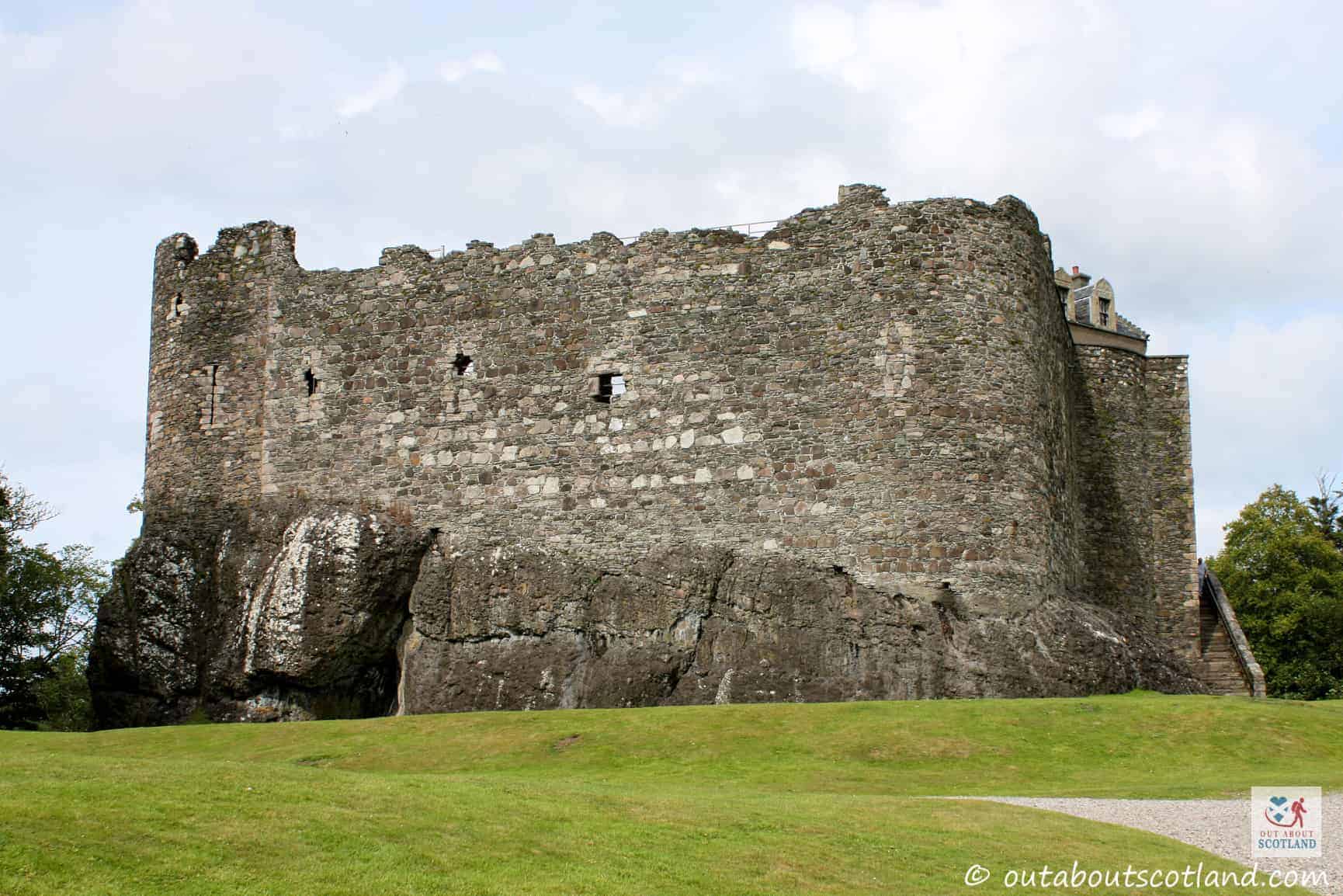
The Highlights
1: From its origins as a stronghold of the MacDougall’s to its role in pivotal events like the Jacobite uprising, Dunstaffnage Castle is steeped in stories of ancient kings, noble clans, and dramatic battles. Exploring its ruins and learning about its past through exhibits and guided tours offers a unique opportunity to connect with Scotland’s heritage.
2: The architectural features of Dunstaffnage Castle are truly remarkable. As you stroll through the castle’s corridors and climb its weathered steps, you can’t help but be in awe of the skill and ingenuity of the builders who created this formidable structure.
3: Overlooking the shimmering waters of Ardmucknish Bay and surrounded by rugged landscapes, the castle offers panoramic views that are nothing short of breathtaking. Whether you’re strolling along the shore or gazing out from the top of the castle’s walls, the beauty of the coastal scenery is guaranteed to leave a lasting impression.
Visiting Tips
1: Dunstaffnage Castle offers a wealth of historical and architectural treasures to explore, so it’s essential to allocate enough time to fully appreciate it. Plan for at least a couple of hours to wander through the ruins, read informative displays, and take in the panoramic views.
2: There are limited facilities at the site so if you’re after food, try the café on the entrance road which is reasonably priced. Alternatively, drive to Oban, which has a wide range of restaurants.
3: If you’d like to see more historic attractions in the area, I recommend McCaig’s Tower in Oban and Bonawe Historic Iron Furnace which is located a few miles further east.
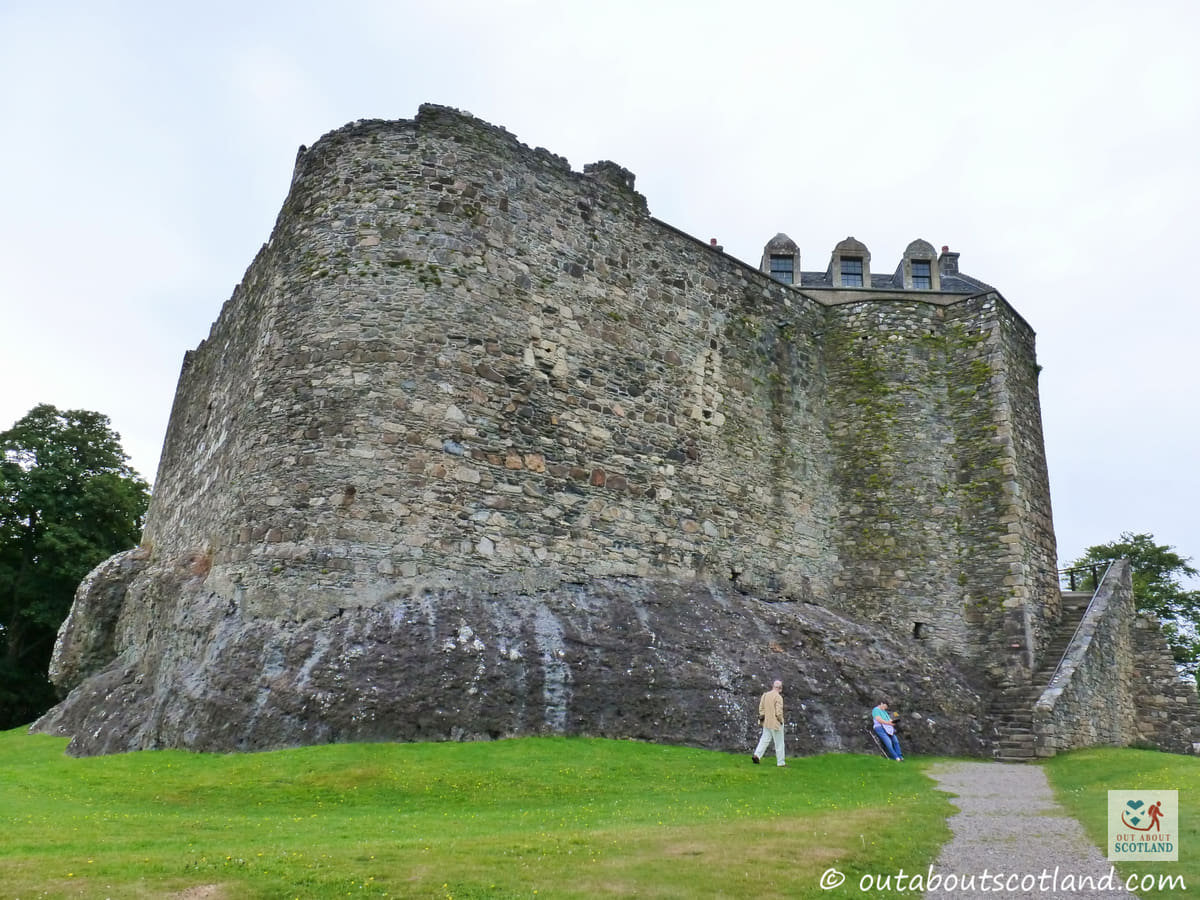
Tourist Information
As usual with Scottish castles, there’s a surprising amount of history to discover at Dunstaffnage and you’ll probably learn a few new facts about Scotland’s history during your visit. I was personally fascinated by the story of Flora MacDonald and her involvement with the Jacobite cause after the Battle of Culloden, but there are lots of other information panels that explain what day-to-day life was like in the castle for the servants and other staff.
There are also displays that depict the history of the MacDougall clan and the part the castle played in the history of Scotland’s Western Isles. It’s genuinely interesting stuff, even if you’re not particularly interested in history.
Although it was built all the way back in the 1220s, Dunstaffnage Castle is almost entirely intact. Walking up the steps to the main entrance leads visitors through the fortified buildings and into the main courtyard, where there are lots of cellars and hidey-holes to keep children entertained.
Leaving the castle, you can head out into the grounds where there are paths heading into the surrounding woodland where you’ll find the remains of the 13th-century Dunstaffnage Chapel, which, although small, offers an interesting collection of ruins to explore. The woods themselves aren’t much to write home about but the local wildlife obviously loves them because Dunstaffnage is one of the few places in Scotland where pipistrelle bats roost.
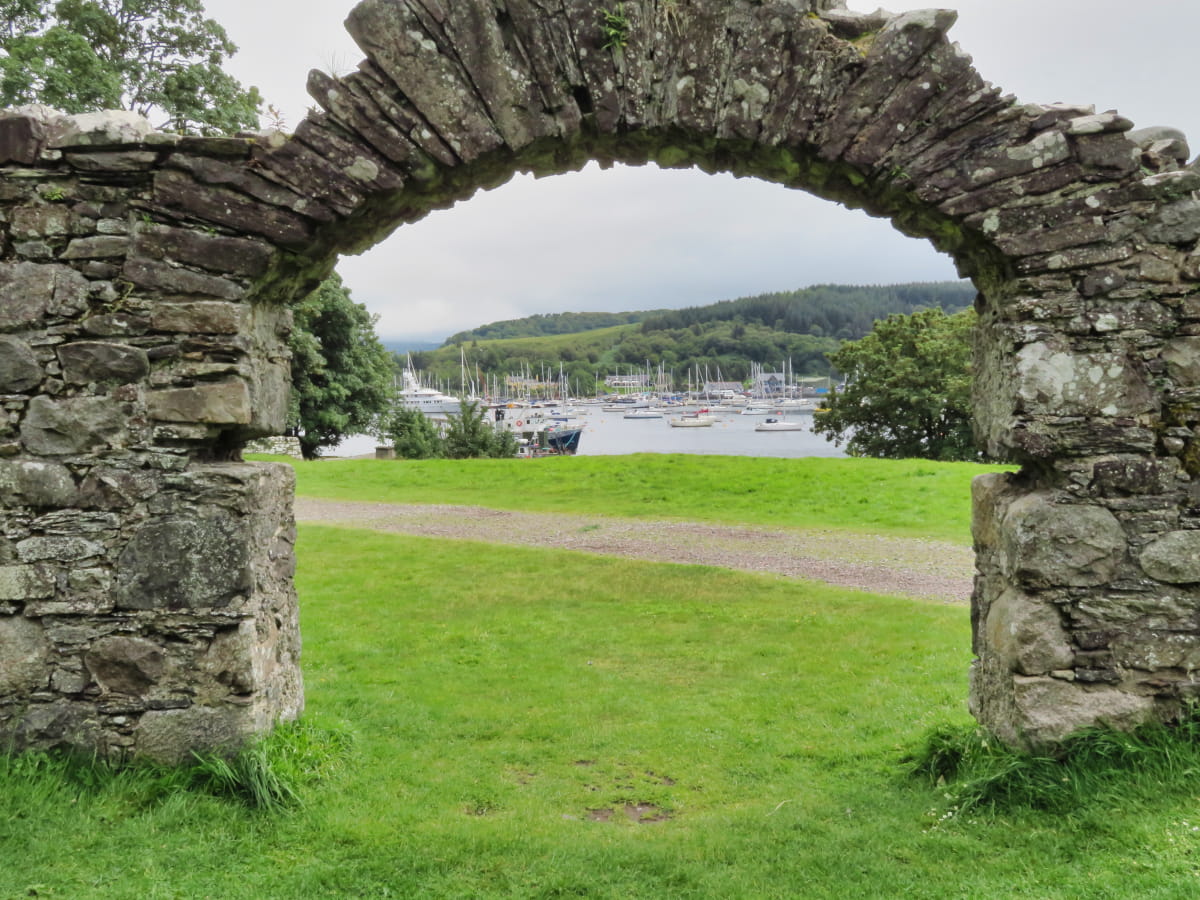
History
The beginning of Dunstaffnage Castle starts with the conflict between two great nations – the Scots and the Norwegians – who were constantly battling for ownership of the Hebrides in mediaeval times. As a location to defend both the heart of Scotland and the seaward passage to the Western Isles, the site would have been incredibly important for Scotland as the Isle of Mull is a short distance away to the west and the Isle of Jura and Isle of Islay lie not much further south.
Dunstaffnage Castle was built under the orders of Duncan MacDougall in the early 1200s. Duncan’s son, Ewen, later improved on the defences of the castle by adding three virtually impenetrable towers, with one of the towers being later converted into the tower house that you can still see today.
The Scots eventually won control of the Hebrides in 1266 but that didn’t mean the conflicts were over for this formidable castle as it was successfully besieged by King Robert the Bruce in the early 1300s after his victory over the MacDougalls at the Pass of Brander.
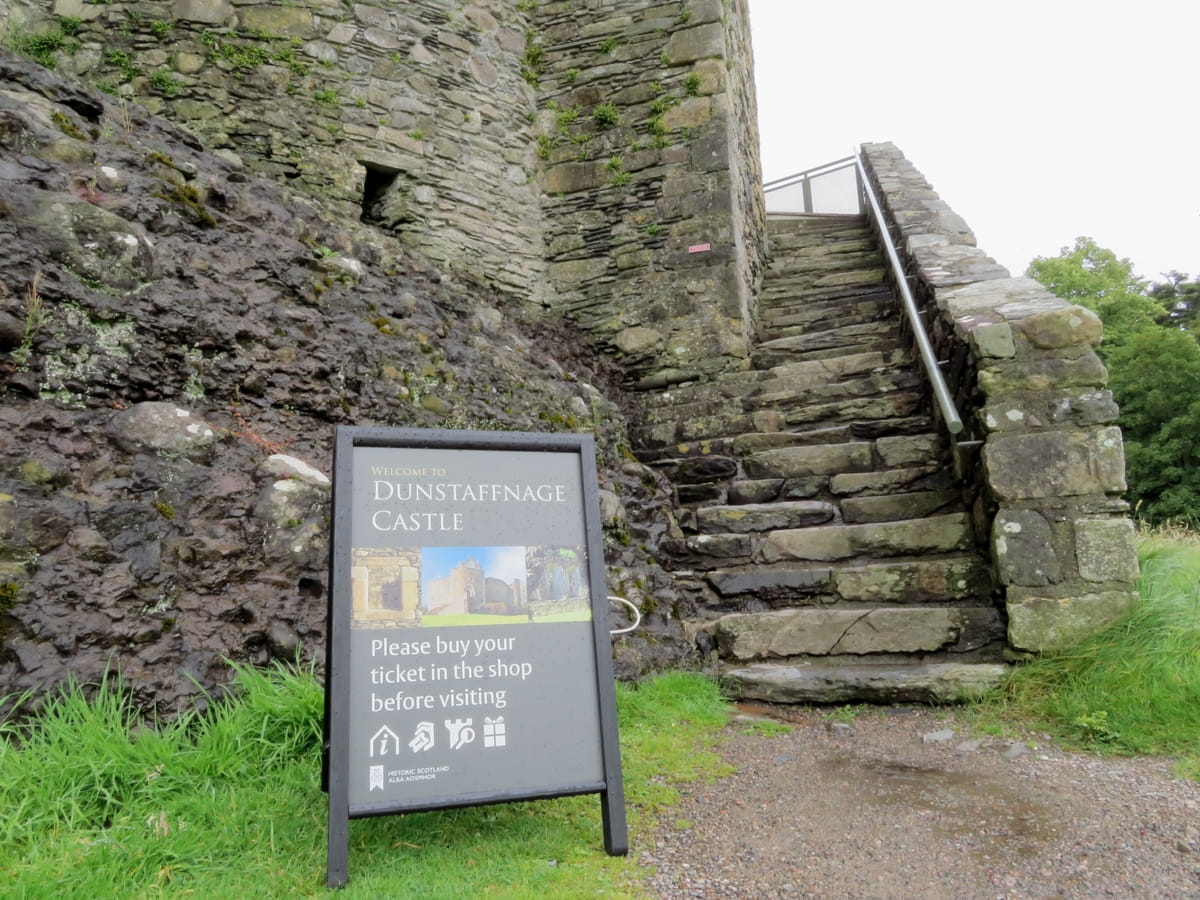
Dunstaffnage Castle remained a royal stronghold for the next 150 years until it passed into the ownership of the Campbell Earls of Argyll, at which time it sealed its place in Scotland’s history with the story of Flora MacDonald. In 1746, after the Jacobite defeat at the Battle of Culloden, Flora MacDonald was imprisoned at Dunstaffnage Castle for the role she played in helping Bonnie Prince Charlie evade capture by the victorious English forces.
While visiting her brother on the Isle of Uist, Flora met the young prince who was fleeing from the English and agreed to help him on his journey to safety in France. By disguising the prince as her serving girl, Flora transported the defeated royal across the sea to the Isle of Skye, from where he made his eventual escape, although she was later captured herself by a pursuing company of English Redcoats.
After her incarceration at Dunstaffnage Castle, Flora was eventually moved to the Tower of London, although she was later released and returned to Scotland. The story of the fleeing prince was eventually immortalised in the 1892 poem by Robert Louis Stevenson, ‘Sing Me a Song of a Lad That Is Gone’, which is known in recent times as the theme tune to the hit TV show Outlander.
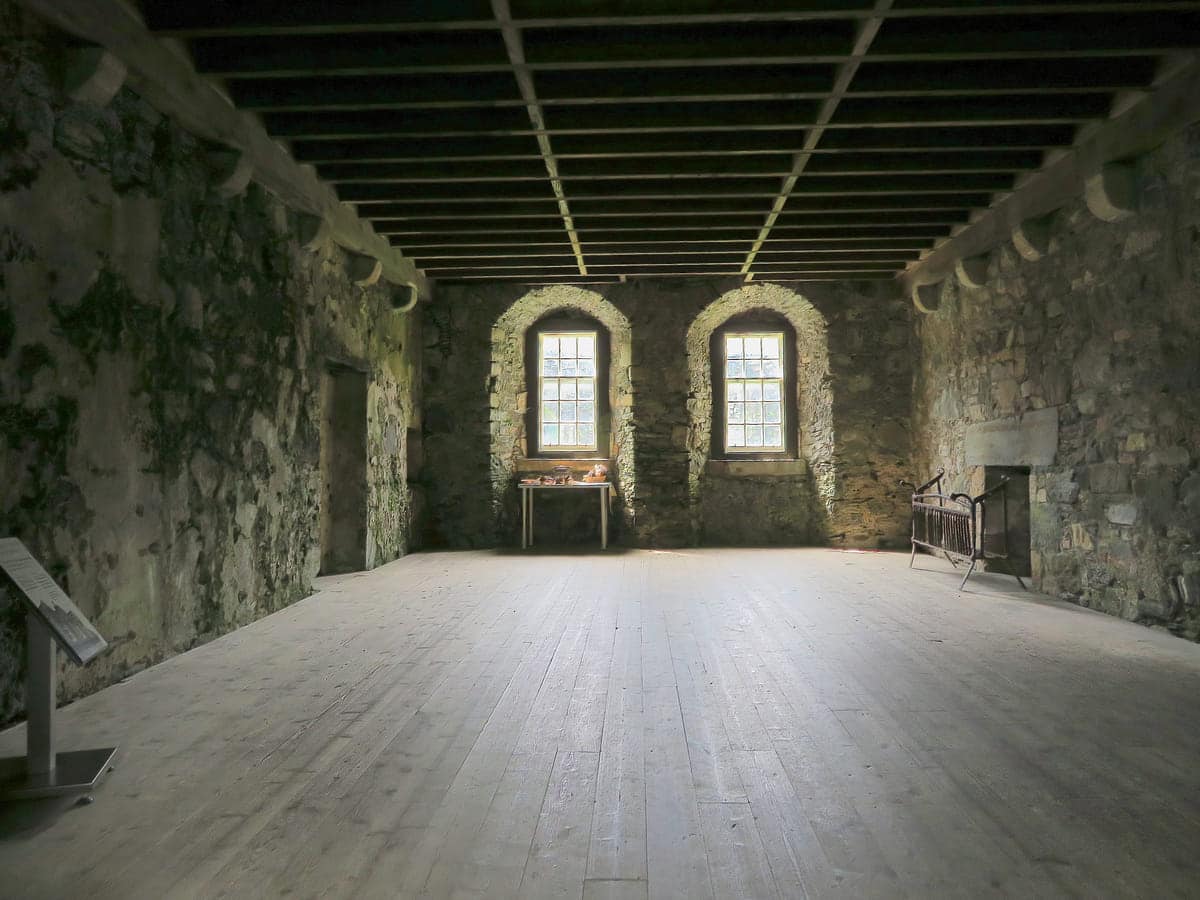
Things to Do
Historical Exploration: Delve into the rich history of Dunstaffnage Castle, one of Scotland’s oldest stone fortresses. Built around 1220, the castle boasts a storied past filled with tales of Viking invasions, royal entanglements, and clan feuds. Take a self-guided tour at your own pace and learn about the castle’s architecture and its past inhabitants.
Chapel Visit: Don’t miss out on visiting the atmospheric Dunstaffnage Chapel, hidden away within the castle grounds. This 13th-century chapel is an interesting example of ecclesiastical architecture, though it’s now roofless and in ruin.
Nature Walks: The castle grounds are worth exploring, as they feature picturesque views of the sea and Ardmucknish Bay. Take a leisurely stroll, breathe in the fresh air, and enjoy a picnic overlooking Dunstaffnage Marina.
Photography: For photography enthusiasts, Dunstaffnage Castle presents a wealth of opportunities. Its imposing stone façade and dramatic location make it a great place for photographers to practice their skills.
Wildlife Spotting: From seabirds of various species to marine animals, nature lovers will find a lot to appreciate at Dunstaffnage Castle. Take a pair of binoculars (link to binocular reviews) and enjoy looking for wildlife as part of your visit.
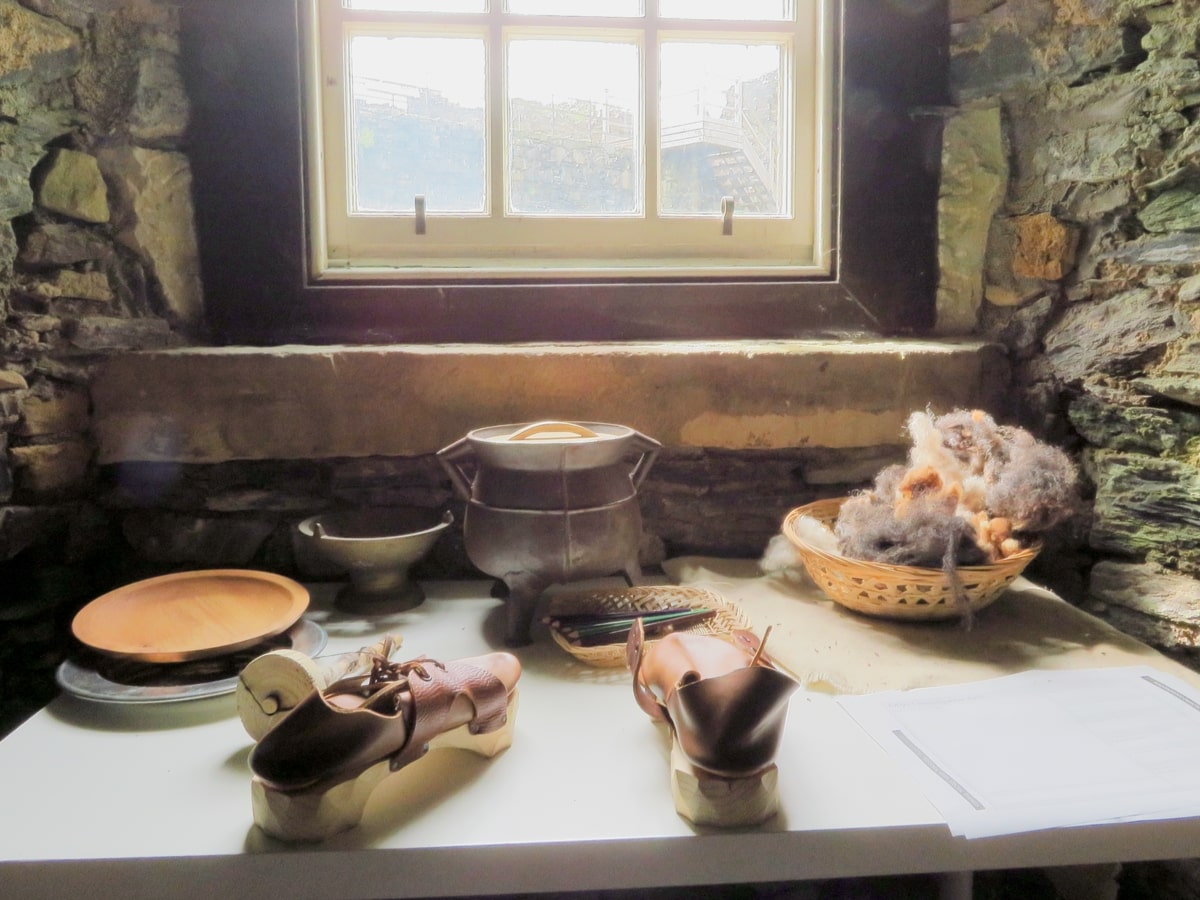
Things to Do Nearby
McCaig’s Tower. Duncraggan Rd., Oban, PA34 5DP. 10-minute drive.
The tower is a 19th-century open stone tower dedicated to the powerful McCaig family. From its elevated hilltop position, it offers superb views across Oban Bay and the Sound of Mull.
Oban. Oban PA34 5QD, 9-minute drive.
Oban is a historic coastal town that grew around its fishing industry, which is still thriving today. The town is the largest in the area, and there is a selection of pubs, restaurants, and gift shops on the high street, along with the west coast island’s main ferry terminal.
Dunollie Museum & Castle. Dunollie House, Oban, PA34 5TT. 10-minute drive.
A ruined tower house that is the ancestral home of clan MacDougall. The attraction features a heritage museum, woodland walks, ornamental gardens, a café, and a gift shop. Dunollie Point is a short walk away and has scenic views over Oban Bay.
Ganavan Bay. Oban PA34 5TB. 13-minute drive.
A scenic point north of Oban that has a wide, golden-sand beach and a large car parking area. The surrounding fields are a popular site for holiday caravans. Rough tracks follow the coastline all the way to Connel.
Falls of Lora. Ardmucknish Bay, PA37 1SJ. 8-minute drive.
A natural spectacle where rushing seawater creates a tidal surge between the narrows of Loch Etive, where it exits the sea at Connel. A good viewing platform can be found on the Connel Bridge, which crosses the water south of Oban airport.
Frequently Asked Questions
Is Dunstaffnage Castle worth visiting?
Dunstaffnage Castle is worth visiting for many reasons.
First, it’s one of the oldest stone castles in Scotland, built around the 13th century by the MacDougall clan. The castle is steeped in history and was once a strategic fort during the Wars of Scottish Independence.
Second, its location is lovely. Perched on a rock at the edge of the sea, it offers stunning views of the surrounding landscape. You can take a leisurely walk around the castle grounds and soak in the mesmerising views of the coastline and the Isle of Mull.
Who owns Dunstaffnage Castle?
Dunstaffnage Castle is owned and managed by Historic Environment Scotland, which keeps it open to the public for self-guided tours. Visit the HES tickets page for the latest entry prices.
Who built Dunstaffnage Castle?
Dunstaffnage Castle was built by Duncan MacDougall, son of the Lord of Lorn, around AD 1240.
Is Dunstaffnage Castle dog-friendly?
Visitors are allowed to take dogs around Dunstaffnage Castle and grounds as long as they are kept on a lead at all times. Dogs are not permitted on the roof terrace.

